Labor challenges. Supply chain shortages. Patient health programs. There’s a lot on your mind right now if you’re a healthcare foodservice operator. Swapping to digital labels across your locations probably isn’t top-of-mind.
However, these little technological wonders may be the best decision you could make to help solve or alleviate some of those challenges.
That’s because digital food labels can be used in healthcare in a variety of ways to streamline and improve both foodservice operator and guest experiences!
Here’s where they can help you out:
Staff & nurse pantries
Being a medical professional is a hard job, full of long hours and a unique kind of emotional toll. At the end of the day, your staff members don’t often have the bandwidth to sort out a well-rounded meal for themselves, despite the reality of them needing good nutrition just as much as those they’re caring for.
Many hospitals are combating this concern by providing staff or nurse pantries full of ready-made food and take-home meal kits. And this is one of those places where digital labels come in handy.
Instead of printing out labels for these pantries every week or possibly every day, organize your staff pantries by swapping to digital food labels that automagically update depending on what food items are available. Labels can tap into your food database to show information like item name, allergens, and even a QR code linking to more details.
Using digital labels instead of print labels in this setting reduces the effort your staff has to put in to keep them up-to-date. It also means the information on the labels is more accurate, giving doctors, nurses, aides, and other medical professionals peace of mind knowing they can grab exactly the sustenance they need to do their jobs.
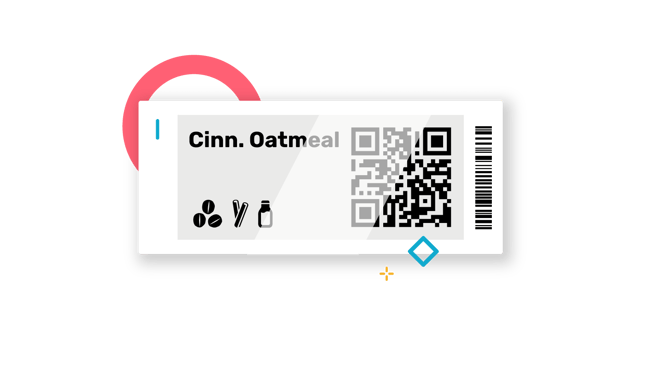 Cafeterias/self-service dining rooms
Cafeterias/self-service dining rooms
One place in your medical center that likely has a ton of labeling needs is your cafeteria or self-service dining rooms. This is the most typical type of dining location in a healthcare facility, and it often feeds not just staff and employees, but hospital visitors like patients’ friends and family.
Even if you have a labeling process set up for your cafeteria’s cycling items, and even if some of the station items rarely change, the reality is you’re still likely switching or having to swap out items every few days or so. Your labels should keep up with these switches, because the people going through your dining rooms have different types of dietary needs, meal preferences, allergens, etc.
How much time do you think your staff loses updating, printing, displaying, and possibly even relaminating static labels each week, just for this one type of location? With digital food labels, this labeling process is simplified. In fact, it makes it easier to be able to show guests MORE information about the dishes you serve.
With digital food labels tapped into your food and menus database, you can choose to display any of the item’s information in your system you’d like and count on it always being as up-to-date as the system it syncs from. Display medium-sized digital labels with serving station information you can set and forget. Swap out your daily or weekly special information on labels you never have to reprint. And enjoy the fact that your staff and visitors will see the right information right when they need it.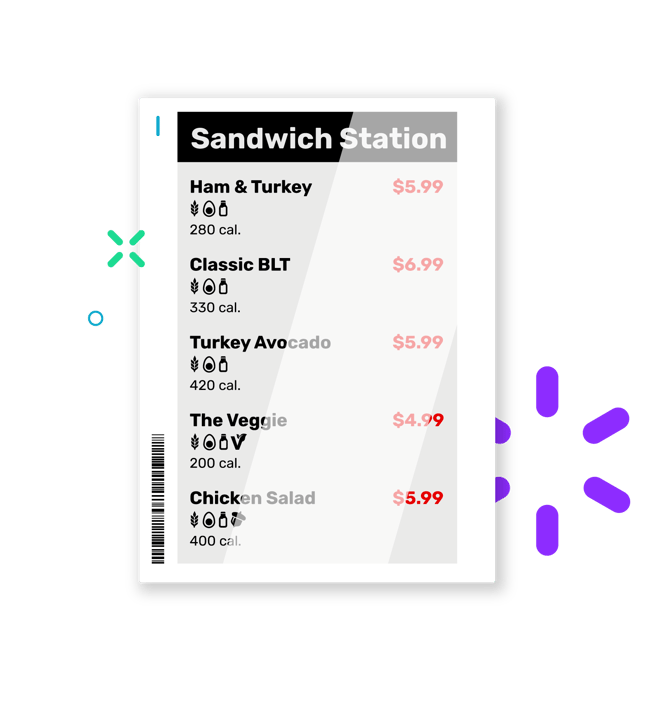
Retail and convenience stores
Another type of location on your medical campus that uses lots of print labels are your retail and convenience stores. These are any sort of establishments outside of your cafeteria or dining room where people might go to eat or purchase on-the-go items, like grab-and-go stands, coffee shops, mini-marts, eateries, etc.
There are many, many labels used in retail locations! They’re all over shelves, wall displays, and food stations, as well as countertop cases that are often full of treats like pastries and baked goods. Labels can even be found in coolers next to bottled drinks and temperature-sensitive foods like pre-made sandwiches, salads, or yogurt.
Labels in retail and convenience stores often display food information like name, price, and allergens. Unfortunately, labels in these locations can change daily, if not hourly, due to supply chain shortages. Usually the price doesn’t stay the same, or the item is no longer available, and so the labels must be swapped out to ensure you’re not losing money and guest expectations are met.
Your staff can spend far too much time updating labels in these locations. That’s why digital food labels can give them hours back in their day; simply push updates remotely to wireless, temperature-tolerant label devices, and go back to focusing on the food and people you care about.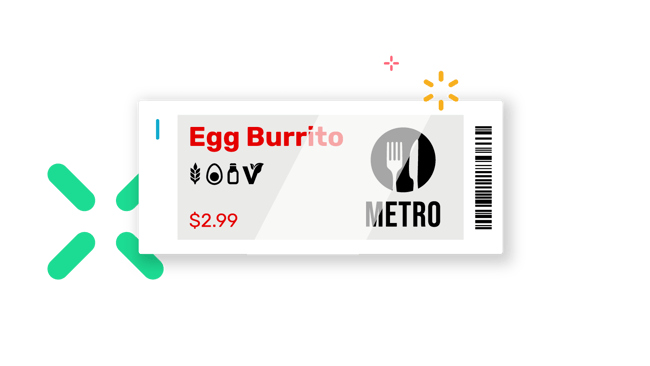
Food pantries
One of the current challenges at the forefront of healthcare professionals’ minds is food insecurity. Across the U.S., hospital systems are creating food-as-medicine efforts to combat these concerns about their patients’ health, and some of these efforts are turning into establishments like food pantries.
Food pantries are like minimarts or grocery stores run by medical centers that carry food like produce and staples. These items are usually free-of-charge to discharged patients, their families, or even the local community as a way to help those who can’t always afford or reach healthy foods and educate people about the connection between nutrition and health.
Just like a regular grocery store would, these food pantries need labels for every single item you carry. And when you run out of an item or need to swap to a replacement due to supply chain shortages, you have to update those labels. Why not eliminate the need for print labels in these locations, too?
Using digital food labels, you can display information like the food name and any related allergen icons. You could even include a QR code linking people to a webpage full of useful information like nutritional benefits, recipe ideas, fun facts, and more to continue educating around the importance of nutrition for your health. 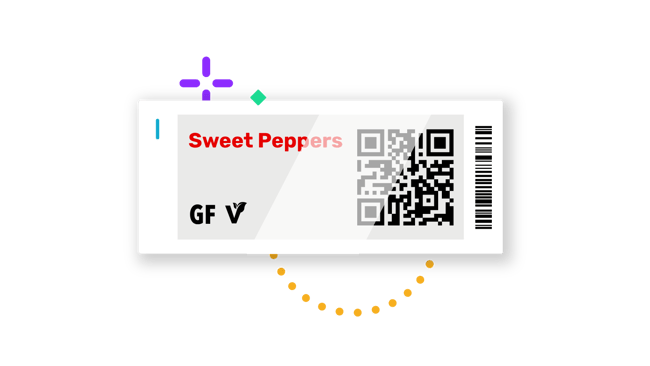
Catering/teaching events
Last but not least, your hospital foodservice staff may also want to use digital labels for any event you might provide food for, such as a catering job or a teaching demonstration or food class. The latter in particular are becoming more popular as medical centers ramp up their food-as-medicine initiatives.
Historically, operators have put print labels next to the trays and pans of food they’re serving for events. However, because each event often requires a menu entirely different from the last gathering, you’re stuck manually creating and printing new labels each time.
Save your staff this unnecessary effort and lost time by swapping to digital labels for your catering and hosted events. All your team will have to do is sync the relevant food items with your labels, which you can then bring to the event and set on display with a variety of attachment hardware options.
Plus, if your operation plans to do more of these types of events in the future, there’s no reason not to make things easier on yourself!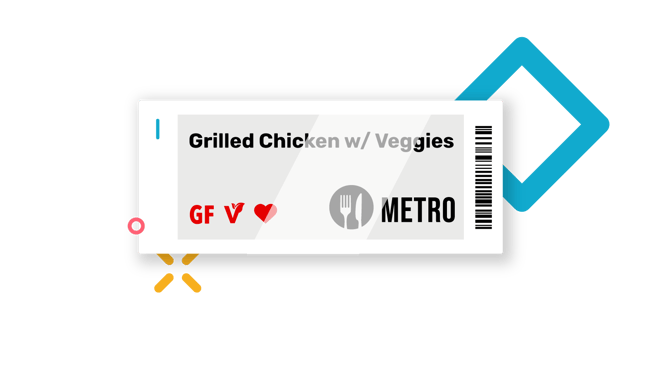
Labor concerns, supply chain issues, and patient health programs may still be your primary challenges right now, but digital labels can aid healthcare foodservice operations in these areas and more. From cafeterias to food pantries to catering, these wireless devices have the power to reduce your workload and free up your staff’s limited time, all while delivering accurate, real-time food and allergen information to the people you serve.
Learn more about digital food labels!
